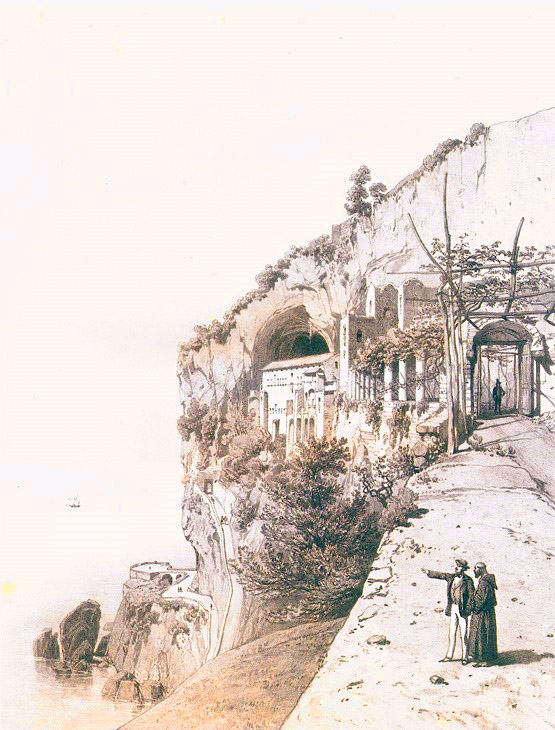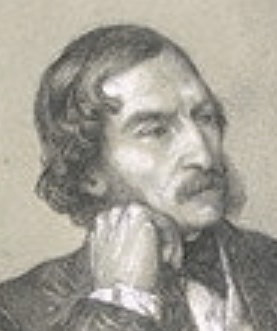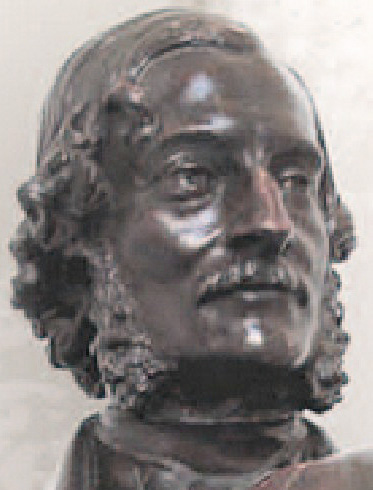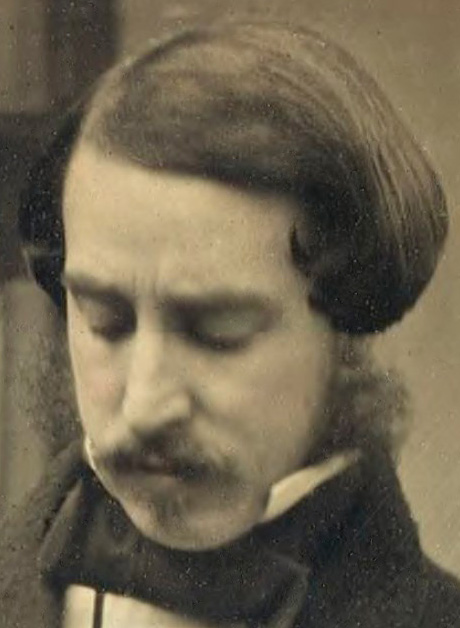Frédéric de Mercey (1803-1860), painter, art critic, director Beaux Arts institute
1st image: Soirée; 2nd: by Heim (1859); 3rd: sculpture by Alexandre Oliva (1859); 4th: photo (likely reversed) by Jean-Baptiste-Louis Gros (daguerreotype pioneer)(1850).
An article in Le Ménestrel (1855) and a gravure by Armand Dayot (1900) confirm Frédéric Bourgeois de Mercey’s presence in the Soirée au Louvre. His appointment as director of the Beaux-Arts institute in 1853, and his role as a jury member for the Exposition Universelle of 1855 further support this identification, even though Eugène Giraud11 never created a caricature of him.

An aristocrat —his family owned a château in Falois near the Somme River— and a devoted nature lover, de Mercey gained recognition for his drawings and travel journals documenting his explorations across Switzerland, Italy (including the Amalfi Coast), and other European regions in the 1830s and 1840s.
However, due to deteriorating eyesight, he later shifted his focus to writing and administrative work.
Under the collective pseudonyms F. de Lagenevais and L. de Geofroy, he published art reviews —including favorable critiques of Ingres39— in Revue des Deux Mondes during the 1840s.
De Mercey admired Ingres and counted Eugène Delacroix10 among his closest friends.
As a leading administrator of the Beaux-Arts Exposition of 1855, alongside inspector Chennevières20, he wielded significant influence —making him a fitting guest at de Nieuwerkerke's16 soirées. However, he was less enthusiastic about rising artists such as Gustave Courbet, whose works struggled to gain acceptance at the annual Salons until the late 1850s.
Interestingly, amid today’s concerns about the impact of social media imagery on adolescents, de Mercey’s stance against book illustrations in 1843 remains thought-provoking. He decried them as:
“an import of bad taste and of the industrial mindset […] moving into the works of the mind, and ending up chasing literature from its home, taking the best space in books for themselves.”
While his viewpoint clashed with the era’s growing embrace of illustrated publications, engravings and photography would soon become central to news distribution and advertising.
Upon his passing in 1860, the artistic journal L’Abeille Impériale wrote:
"In this disavowal of himself, in this presentation of exquisite modesty, the man takes shape in his entirety. M. de Mercey shies away from praise, from thanks, from being in the spotlights —he always slips into the background— even in Biard's painting representing the soirée of Count de Nieuwerkerke, M. de Mercey must only avoid that his large size will not be obscured by the accessories in the dark background..."



